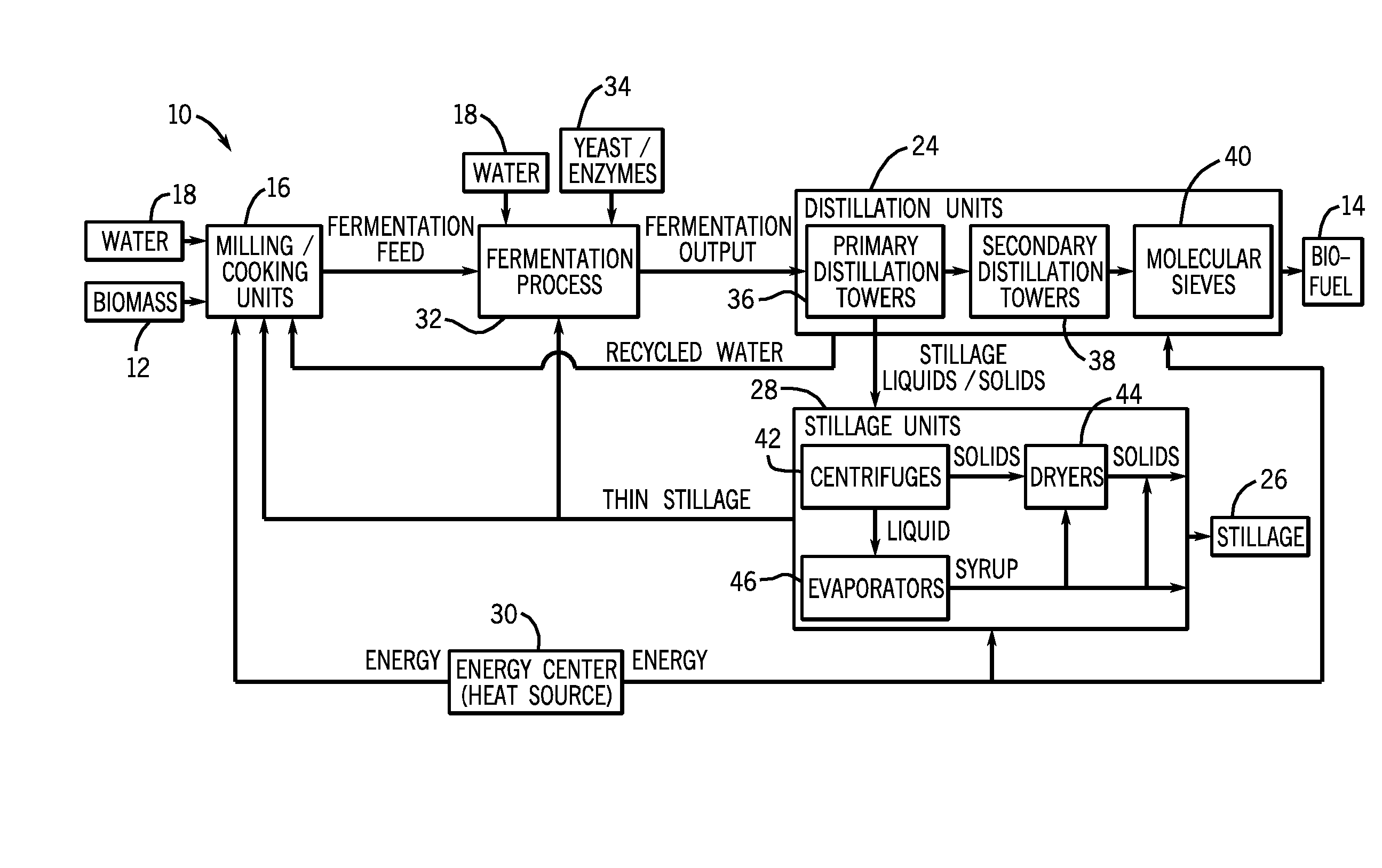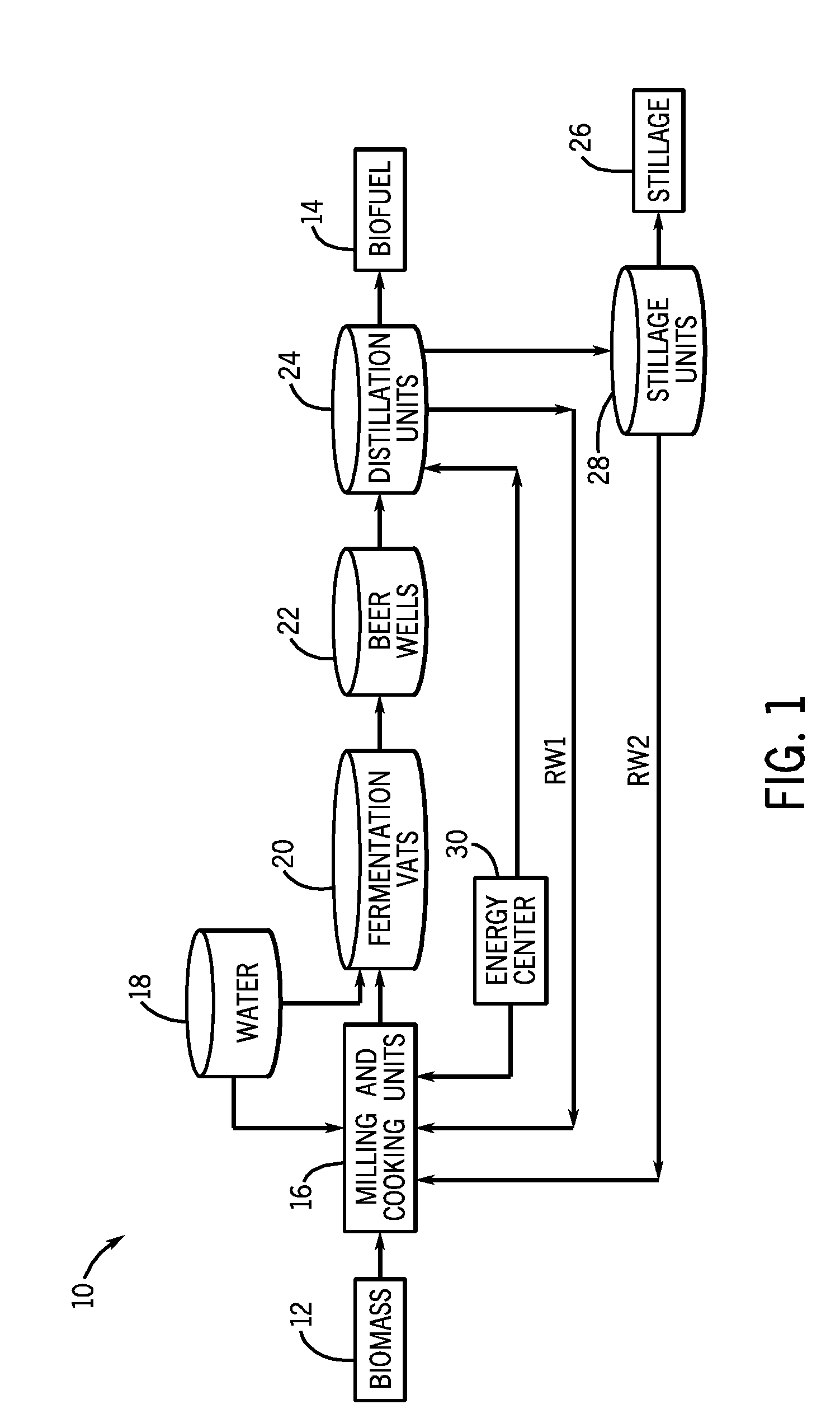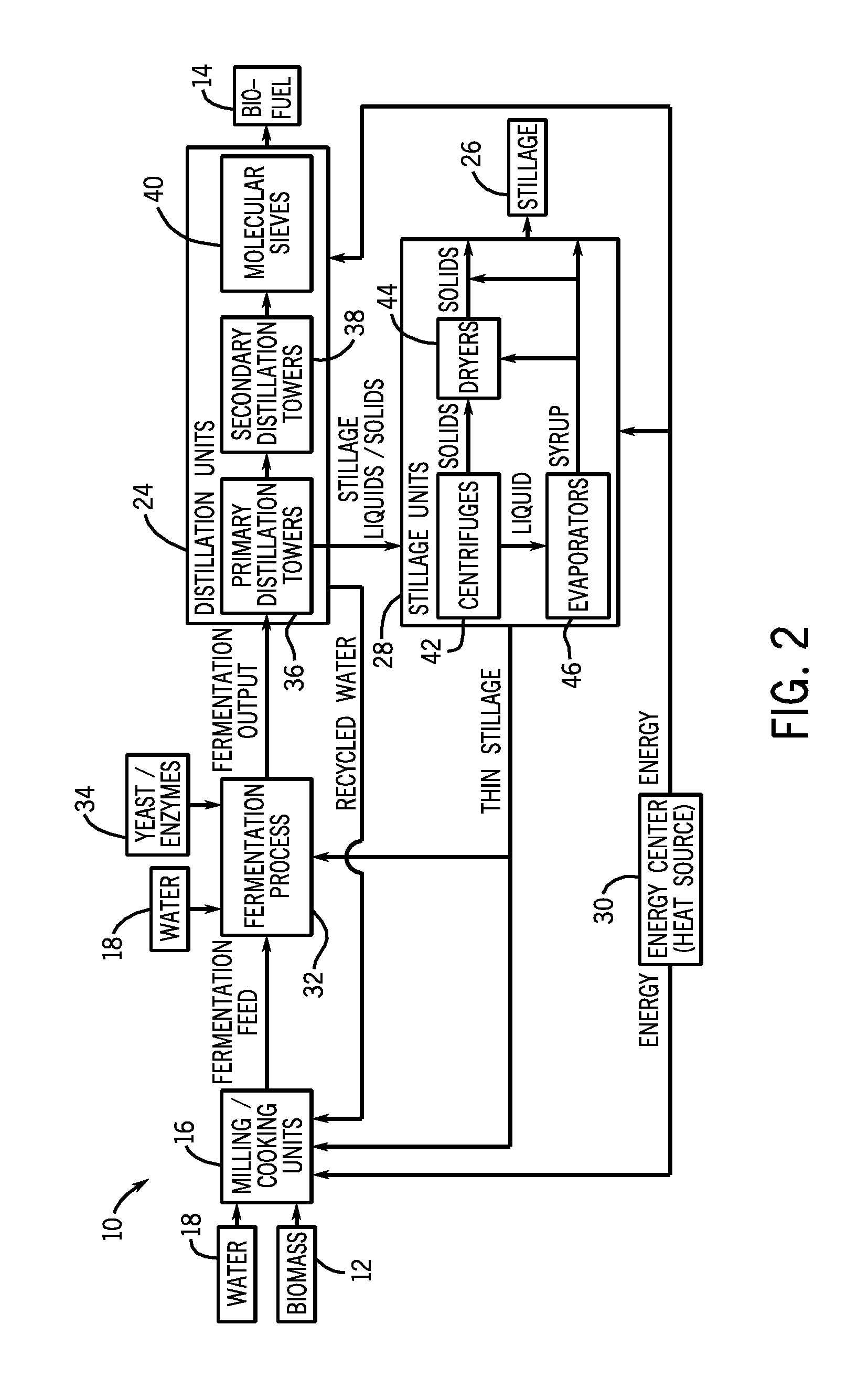Optimizing product drying through parallel lines of centrifuges and dryer process units
a technology of parallel lines and dryers, applied in adaptive control, process and machine control, instruments, etc., can solve problems such as inability to meet the requirements of product drying, equipment in parallel paths may not always be characterized by the same performance profiles and efficiency, and flow rates through parallel paths
- Summary
- Abstract
- Description
- Claims
- Application Information
AI Technical Summary
Problems solved by technology
Method used
Image
Examples
Embodiment Construction
[0012]Turning now to the drawings, FIG. 1 is a diagram of an exemplary biofuel production plant 10, illustrating how biomass 12 may be processed through several stages to produce biofuel 14. Biomass 12 may first be provided to a milling and cooking process, e.g., milling and cooking units 16, where water 18 (and possibly recycled water RW1 and RW2) may be added and the biomass 12 may be broken down to increase the surface area-to-volume ratio. This increase in surface area may allow for sufficient interaction of the water 18 and biomass 12 surface area to achieve a solution of fermentable sugars in water 18. The mixture, a biomass 12 and water 18 slurry, may be cooked to promote an increase in the amount of contact between the biomass 12 and water 18 in solution and to increase the separation of carbohydrate biomass from non-carbohydrate biomass. The output of the milling and cooking units 16 (i.e., the fermentation feed or mash) may then be sent to a fermentation process, where one...
PUM
| Property | Measurement | Unit |
|---|---|---|
| surface area-to-volume ratio | aaaaa | aaaaa |
| flow rates | aaaaa | aaaaa |
| flow rate | aaaaa | aaaaa |
Abstract
Description
Claims
Application Information
 Login to View More
Login to View More - R&D
- Intellectual Property
- Life Sciences
- Materials
- Tech Scout
- Unparalleled Data Quality
- Higher Quality Content
- 60% Fewer Hallucinations
Browse by: Latest US Patents, China's latest patents, Technical Efficacy Thesaurus, Application Domain, Technology Topic, Popular Technical Reports.
© 2025 PatSnap. All rights reserved.Legal|Privacy policy|Modern Slavery Act Transparency Statement|Sitemap|About US| Contact US: help@patsnap.com



